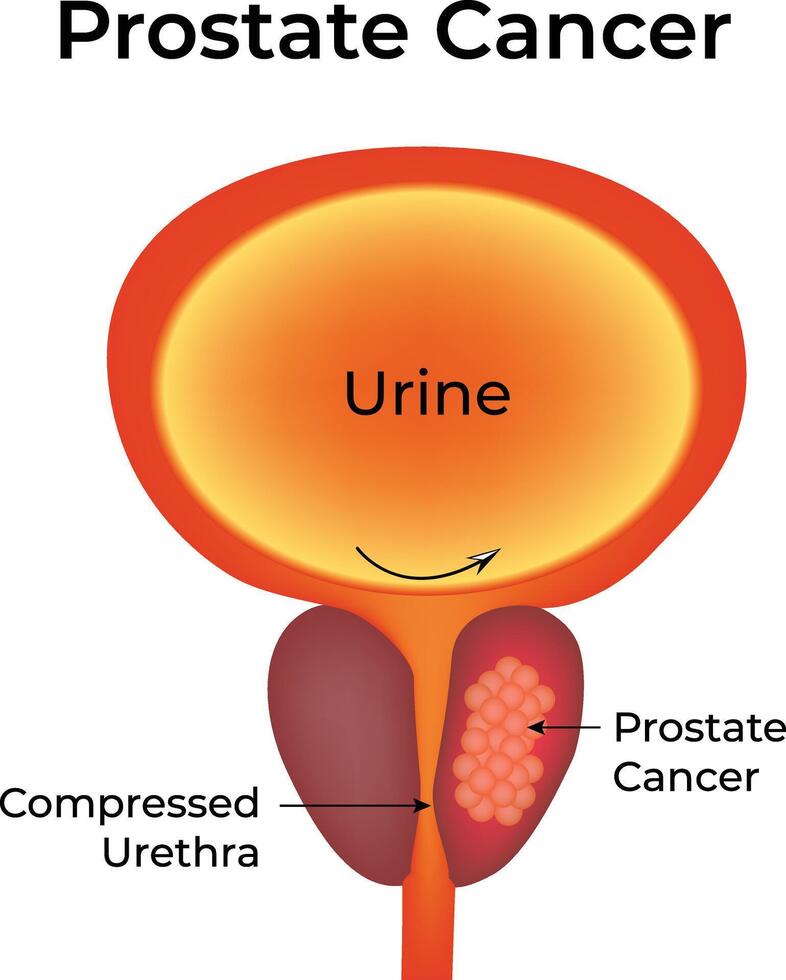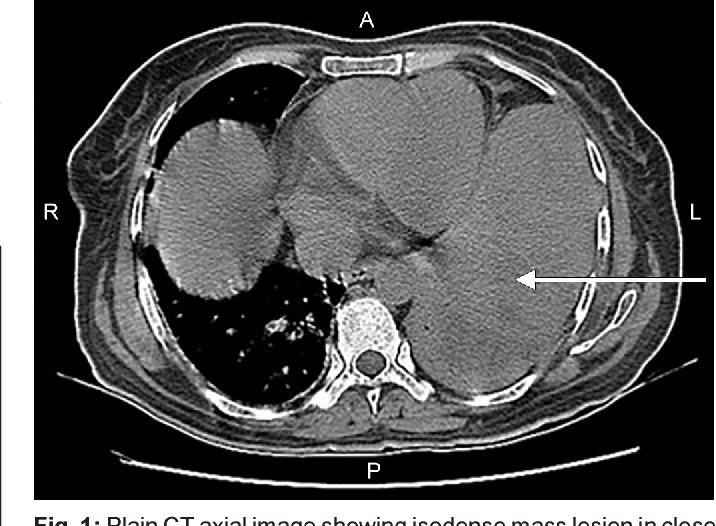What You Need to Know About Liver Cancer Rash
What You Need to Know About Liver Cancer Rash: The Full Guide
- Understanding Liver Cancer and Its Dermatological Manifestations
- What Does a Liver Cancer Rash Look Like?
- Why Liver Cancer Can Cause Skin Reactions
- The Role of Histamine and Bile Salts in Liver Itching
- Diagnostic Approach to Rashes Caused by Liver Cancer
- Differentiating Between Liver Rash and Other Skin Conditions
- Systemic Symptoms That Often Accompany the Rash
- How Liver Cancer Rash Progresses Over Time
- Treatment Options for Liver Cancer Rash and Underlying Disease
- Managing Itching and Discomfort Without Steroids
- Can Liver Cancer Rash Be Mistaken for Side Effects of Chemotherapy?
- Skin Rashes as Early Indicators in Liver Cancer Screening
- When a Rash Signals Liver Cancer Progression
- Importance of Monitoring Rash in Palliative Care
- Rash as a Sign for Caregiver or Patient to Seek Help
- Types of Liver Cancer Rash: Clinical Comparison
- 15+ Frequently Asked Questions (FAQ)
Understanding Liver Cancer and Its Dermatological Manifestations
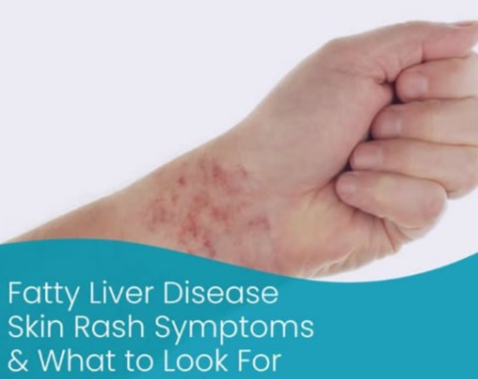
Liver cancer doesn’t always begin with obvious abdominal symptoms. In many cases, one of the earliest external signs can be skin-related — such as a persistent rash, itching, or discoloration. These dermatological symptoms occur due to liver dysfunction, which affects detoxification and immune responses in the skin.
When liver cancer impairs the organ’s ability to process toxins and regulate hormones, those imbalances often manifest on the skin. A rash associated with liver cancer is not random — it reflects internal inflammation, blood stagnation, and sometimes even bile salt accumulation in the dermis.
It is especially important to recognize that these skin changes can appear before traditional liver pain or fatigue. This is why skin assessment is gaining attention in early oncology screenings. For example, some patients have reported skin changes that led doctors to ultimately detect liver cancer through imaging and lab tests.
What Does a Liver Cancer Rash Look Like?
A liver cancer rash typically does not resemble a standard allergic reaction or infectious skin condition. It tends to present with subtle but progressive changes that include:
- Widespread redness or a purplish hue, especially on the torso or limbs
- Thin, web-like blood vessels just beneath the surface (spider angiomas)
- Unexplained bruises, petechiae (small red spots), or dryness with scaling
- Chronic itchiness without visible hives or swelling
Here’s a table outlining common liver-related skin manifestations and how they compare to benign rashes:
| Feature | Liver Cancer Rash | Common Rash (e.g., eczema) |
| Appearance | Patchy redness, angiomas, petechiae | Scaly, localized, inflamed |
| Location | Trunk, shoulders, face | Elbows, knees, hands |
| Associated symptoms | Jaundice, fatigue, abdominal bloating | Itching, dryness, possible allergy |
| Progression | Worsens with liver decline | Fluctuates based on environment |
The presence of multiple skin signs along with fatigue or changes in stool/urine should prompt further liver examination.
Why Liver Cancer Can Cause Skin Reactions
To understand the connection between liver cancer and skin rashes, it helps to consider the liver’s role in the body. The liver filters blood, processes toxins, and manages many metabolic functions. When it’s compromised by cancer, those functions break down, triggering several dermatological responses:
- Bile buildup: Causes itching and irritation due to bile salt accumulation
- Clotting disruptions: Leads to unexplained bruising or purpura
- Hormonal imbalances: Contribute to vascular skin patterns like angiomas
- Toxin overload: Triggers inflammatory cascades on the skin
In cases where cancer liver symptoms like fatigue, weight loss, or jaundice are present, skin manifestations may reflect worsening systemic effects. This underscores the importance of holistic symptom tracking during cancer progression.
The Role of Histamine and Bile Salts in Liver Itching
One of the hallmark symptoms of liver-related skin issues is persistent itching, medically termed pruritus. In the context of liver cancer, this can occur with or without a visible rash. The root causes lie in two major biochemical disturbances:
- Elevated bile salts: These accumulate in the bloodstream when the liver fails to drain bile properly. They deposit in the skin, causing irritation and an urge to scratch, especially at night.
- Histamine release: Liver cancer can increase histamine levels due to systemic inflammation. This stimulates nerve endings and contributes to generalized itching.
Here’s a visual breakdown of this mechanism:
Infographic: Itch Pathway in Liver Dysfunction
- Liver cancer → Bile drainage blocked → Bile salts in blood
- Histamine and bile salts → Accumulate in skin
- Skin nerves → Trigger persistent itching sensation
For many patients, itching is severe enough to interfere with sleep or quality of life — even in the absence of jaundice or significant liver enlargement.
Diagnostic Approach to Rashes Caused by Liver Cancer
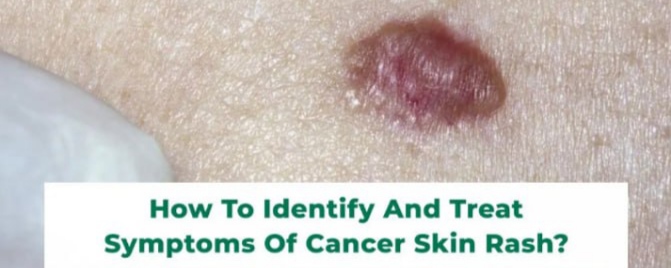
When a liver-related skin condition is suspected, physicians rely on a combination of visual examination, patient history, and diagnostic tools. The presence of a rash alone isn’t sufficient for a liver cancer diagnosis, but it can serve as an important clinical clue.
A thorough workup includes:
- Liver function tests (LFTs) to assess enzymes like ALT, AST, and bilirubin
- Blood clotting tests such as INR or PT, often abnormal in advanced liver damage
- Abdominal imaging — typically starting with ultrasound and advancing to CT or MRI
- Skin biopsy, if there’s uncertainty whether the rash is related to cancer or another dermatological condition
If cancer is confirmed, the rash may help gauge the extent of liver dysfunction and paraneoplastic syndromes. In some cases, advanced liver lesions are first found via radiology after a skin consultation revealed unusual symptoms, demonstrating how a rash may indirectly detect liver cancer.
Differentiating Between Liver Rash and Other Skin Conditions
Because liver cancer rash can resemble benign dermatological issues, misdiagnosis is possible without context. Conditions such as eczema, psoriasis, rosacea, or even lupus may appear similar in early stages.
Dermatologists and oncologists collaborate to distinguish liver-related skin signs through a combination of blood testing, clinical history, and response to topical treatments. Unlike most inflammatory skin diseases, liver rashes tend to resist steroid creams and follow a progressive pattern tied to liver biomarkers.
Table: Key Differences Between Liver Cancer Rash and Non-Cancerous Skin Conditions
| Feature | Liver Cancer Rash | Common Non-Cancer Rash |
| Improves with treatment | No (progresses over time) | Often resolves with medication |
| Associated systemic signs | Yes (jaundice, fatigue) | Usually skin-limited |
| Diagnostic value | Requires imaging/labs | Often clinical diagnosis only |
Such comparative evaluations are critical, especially in older patients or those with a family history of cancer or hepatitis.
Systemic Symptoms That Often Accompany the Rash
The rash in liver cancer rarely exists in isolation. It is almost always part of a broader constellation of systemic symptoms, reflecting the liver’s failing capacity to regulate hormones, detoxify the blood, and manage clotting functions.
Typical accompanying signs include:
- Persistent fatigue and weakness, even with adequate rest
- Unintentional weight loss, often significant over a short period
- Jaundice, where skin and eyes take on a yellow hue
- Dark urine and pale stools, reflecting bilirubin processing issues
- Right upper quadrant abdominal discomfort
In later stages, abdominal swelling from ascites, muscle wasting, and confusion from hepatic encephalopathy can also develop. These physical changes should prompt full evaluation and often correlate with worsening rash intensity.
In some patients with metastatic cancers, especially breast cancer liver and skin involvement, rash-like symptoms may also appear. These must be differentiated using imaging and biopsy techniques.
How Liver Cancer Rash Progresses Over Time
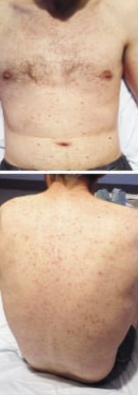
The evolution of a liver cancer rash typically mirrors the tumor’s progression. In the earliest phase, patients may only notice mild itching or subtle skin color changes. As cancer advances, the rash may become more prominent, involve wider skin regions, and appear alongside other hepatic symptoms.
Here’s a simplified timeline in infographic format:
Infographic: Timeline of Liver Cancer Rash Development
- Subclinical stage – Liver is damaged, but no visible symptoms
- Initial rash phase – Mild itching, slight color change on chest or limbs
- Progressive phase – Development of spider angiomas, petechiae, bruising
- Advanced stage – Widespread skin involvement, jaundice, systemic symptoms
Not all patients follow this path exactly. Those with fast-growing hepatocellular carcinoma may present with sudden and severe changes, while those with chronic cirrhosis may experience gradual skin decline over months.
Treatment Options for Liver Cancer Rash and Underlying Disease
The primary goal in treating a liver cancer rash is addressing the cancer itself. Since the skin reaction stems from internal pathology, topical creams offer minimal relief unless the root cause is targeted. Oncology teams focus on systemic treatments:
- Surgical removal (if the cancer is localized and operable)
- Chemotherapy or targeted therapy to slow tumor growth
- Immunotherapy to help the body recognize and attack cancer cells
- Liver transplant, in very selected cases
Alongside cancer treatments, dermatologic support may include:
- Bile acid sequestrants like cholestyramine (to reduce skin itching)
- Antihistamines (for temporary relief)
- Moisturizing emollients (to soothe irritation)
If the skin condition is especially severe, corticosteroid ointments or phototherapy may be considered — but only as supportive care.
Managing Itching and Discomfort Without Steroids
For many patients, itching from liver dysfunction is worse than the visible rash itself. It can be debilitating, interfere with sleep, and lower quality of life. Fortunately, several non-steroidal methods are available:
| Non-Steroid Intervention | Mechanism of Relief | Notes |
| Bile acid binders | Bind bile salts to reduce skin deposition | Cholestyramine most used |
| Antihistamines | Block histamine signals to nerves | May cause drowsiness |
| Menthol/camphor lotions | Cool nerve endings to dull itch | Temporary effect |
| Ursodeoxycholic acid | Improves bile flow in cholestasis | Prescribed in chronic liver disease |
| Cooling packs & oatmeal baths | Reduce skin inflammation and redness | Home remedy support |
If symptoms worsen, particularly with new lesions or rapid spread, imaging and labs are required to reassess for disease progression or skin metastases. In certain rare cancers like dangerous skin cancer variants, aggressive rash development might indicate cutaneous spread rather than liver origin.
Can Liver Cancer Rash Be Mistaken for Side Effects of Chemotherapy?
This is a common clinical dilemma. Chemotherapy and targeted therapies often lead to rashes that resemble liver disease manifestations. For instance, EGFR inhibitors may cause acneiform eruptions, while immunotherapies can trigger autoimmune skin responses.
Here are key differentiators between chemotherapy-induced skin reactions and liver cancer rash:
| Aspect | Chemotherapy Rash | Liver Cancer Rash |
| Onset | After treatment cycles begin | Can precede diagnosis |
| Pattern | Often face/scalp-focused | Torso, limbs, widespread |
| Itch intensity | Moderate | Severe and persistent |
| Lab abnormalities | Often normal LFTs | Elevated bilirubin, ALT, AST |
Clinicians use timing, bloodwork, and imaging to determine the true source of rash-like symptoms, especially in patients receiving concurrent treatment.
Skin Rashes as Early Indicators in Liver Cancer Screening
Although liver cancer often progresses quietly, skin changes can act as an early visual warning system. For high-risk groups — including those with chronic hepatitis, cirrhosis, or a family history of liver cancer — dermatologic surveillance should be part of routine checkups.
Some patients have had their cancer detected only after persistent itching or rash led to further testing. For instance, unexplained spider angiomas, facial redness, or forearm petechiae may prompt physicians to order ultrasound or MRI scans — leading to early discovery.
This concept is especially important for populations with few access points to specialty care. In global screening initiatives, clinicians are encouraged to integrate visual rash assessment, jaundice checks, and symptom logs.
Related conditions like *early skin metastases* can also present similarly, making differential diagnosis essential when skin signs are the only clue.
When a Rash Signals Liver Cancer Progression
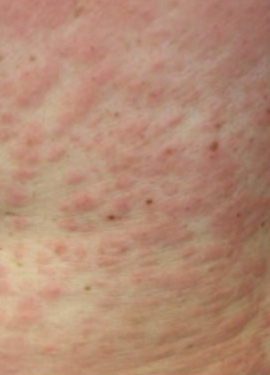
As liver cancer advances, the nature of the rash may change. It can evolve from mild redness or itching into more alarming dermatological patterns, often involving:
- Widespread spider angiomas across the chest or face
- Persistent bruising or purpura from blood clotting defects
- Skin thinning and tears, especially in the elderly
- Jaundiced patches with yellow hue, even without full facial jaundice
These changes reflect deeper hepatic decompensation. For instance, increased bilirubin correlates directly with yellow discoloration, while reduced clotting factors make skin more vulnerable to trauma.
In patients with known cancer, worsening rash should prompt reassessment of liver function, tumor burden, and metastasis status. This is particularly relevant when distinguishing from skin symptoms of breast cancer liver and skin spread, which may look deceptively similar in late stages.
Importance of Monitoring Rash in Palliative Care
In terminal or palliative stages of liver cancer, rash observation remains vital. Though curative treatments may no longer be pursued, managing discomfort and preserving skin integrity can greatly enhance patient quality of life.
Infographic: Rash Monitoring Goals in Palliative Liver Cancer
- Track itch severity daily using visual analog scales
- Document rash spread or deepening color weekly
- Use cool compresses and non-irritating lotions for comfort
- Avoid harsh soaps, alcohol-based products, or scrubbing
- Encourage communication with caregivers about any new pain or skin changes
These measures ensure not only symptom relief but also early detection of potential complications like infections, skin breakdown, or reactions to medications used in supportive care.
Rash as a Sign for Caregiver or Patient to Seek Help
For many patients, caregivers are the first to notice subtle changes in skin color, behavior, or discomfort. Recognizing that a rash might be more than just a skin issue can expedite necessary medical follow-up.
Patients or families should contact medical providers if they observe:
- Rapid rash expansion over days
- Deep yellowing of skin or sclera (eyes)
- Severe sleep disruption from itching
- Bleeding, oozing, or skin ulcers
- Unusual body odor (a sign of uremia or skin necrosis)
These developments may signal not just skin irritation, but systemic decompensation, and can accompany issues like hepatic encephalopathy or fluid overload.
Caregivers often benefit from visual guides or laminated charts that help track symptoms. Medical teams should empower families with the language and tools to describe skin changes accurately.
Types of Liver Cancer Rash: Clinical Comparison
Understanding the types of rash that appear in liver cancer helps patients and providers respond faster and more accurately. Below is a comparative table of the most common liver-related dermatologic presentations.
Table: Types of Rash Seen in Liver Cancer Patients
| Rash Type | Description | Clinical Significance |
| Spider Angiomas | Central red dot with radiating lines | Portal hypertension or hormonal shifts |
| Jaundiced patches | Yellow-tinted areas, often on trunk | High bilirubin, usually in advanced disease |
| Petechiae/purpura | Small purple/red dots from broken vessels | Thrombocytopenia or clotting disorder |
| Pruritus-only rash | No visible rash, but intense itch | Early biliary obstruction or paraneoplastic sign |
| Dry eczema-like | Scaly, flaky skin around limbs | Malnutrition or impaired fat metabolism |
Each of these patterns should raise attention when appearing in high-risk individuals, such as those with cirrhosis, hepatitis B/C, or prior liver abnormalities.
15+ Frequently Asked Questions (FAQ)
1. Can a liver cancer rash appear before any other symptoms?
Yes, in some cases, a persistent and unexplained rash may be the first sign of liver dysfunction or cancer. This often happens in patients with underlying liver disease where skin inflammation, itchiness, or vascular markings develop before fatigue, jaundice, or abdominal symptoms are noticed.
2. Is a rash a definitive sign of liver cancer?
No, many other conditions — including allergies, infections, autoimmune disorders, and medications — can cause similar rashes. Liver cancer rashes are only identified as such when other supporting signs (like abnormal liver function tests or imaging) are present.
3. Can antihistamines fully treat liver cancer rash?
Antihistamines may reduce itching temporarily, but they don’t address the underlying liver condition. Long-term relief usually depends on managing the liver cancer or related liver dysfunction.
4. Are liver cancer rashes contagious?
No. These rashes are caused by internal liver or immune dysfunction and are not transmissible to others through skin contact or shared surfaces.
5. Does every liver cancer patient develop a rash?
No, only a subset of patients with liver cancer experience visible skin symptoms. It depends on the tumor’s impact on liver function, bile flow, and individual immune response.
6. Can topical treatments cure the rash?
Topical creams may ease discomfort but will not cure the rash if the root cause is internal. In most cases, dermatologic support is only palliative while liver cancer remains the main focus of treatment.
7. How do I differentiate between rash caused by chemotherapy and one caused by cancer?
Timing is key. Rashes appearing after treatment cycles often indicate side effects, while those present beforehand or worsening independently of medication point to liver-related causes. Blood tests and medical imaging help clarify this distinction.
8. Does alcohol use worsen the rash?
Yes, alcohol can further damage the liver, worsen inflammation, and lead to more bile acid buildup in the skin — intensifying rash and itch severity.
9. Are natural remedies like aloe vera effective?
Aloe vera may provide temporary cooling and skin hydration but does not address the root issue. It’s safe as a complementary option, but not a replacement for medical care.
10. Can liver cancer rash indicate metastasis?
In rare cases, skin changes may reflect metastatic spread, especially if accompanied by nodules or ulceration. However, most rashes in liver cancer stem from liver dysfunction itself, not skin invasion.
11. Can rash location tell me anything about liver involvement?
Sometimes. For instance, spider angiomas often appear on the upper chest and face, areas with high estrogen sensitivity — which reflects impaired hormone metabolism in liver disease.
12. Is there any relationship between rash and liver enzyme levels?
Yes. Elevated bilirubin, alkaline phosphatase, and gamma-GT often correlate with bile buildup and cholestasis — both common drivers of pruritus and rash in liver cancer.
13. Can liver cancer rash cause skin infection?
Indirectly, yes. Scratching due to intense itching can break the skin barrier, increasing the risk of secondary bacterial infection. Patients with low immunity or advanced cancer are especially vulnerable.
14. Can you have liver cancer and normal skin?
Yes, in fact, many patients with early-stage liver cancer show no skin symptoms at all. The presence or absence of rash does not determine cancer severity on its own.
15. How often should I monitor a rash if I have liver disease?
Daily observation for changes in spread, color, or texture is helpful. Document any new symptoms and report worsening signs to your healthcare provider, especially if combined with fatigue, nausea, or abdominal pain.

